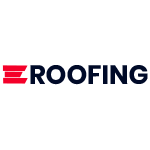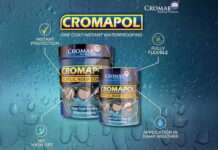Lead can often be a hassle to work with – even putting aside its toxicity, it’s bulky, expensive and heavy. That’s why non-lead lead alternatives have become popular, alternatives like Leadax. Leadax uses a combination of aluminium and recycled polyvinyl butyral. Leadax can be used in many of the positions we would normally use lead flashing in. But how can you use Leadax on your own roof?
Note that if you are not comfortable working on a ladder or on a roof you should not try to install Leadax on the roof by yourself; hire trusted professionals instead. If you are, then remember to take all necessary safety precautions.
You will need:
- Safety gloves and safety goggles
- Leadax in the appropriate grade and colour
- Hot air gun or MS Polymer Sealant
- Lead Dressing Stick or Roller
- Aluminium Strip (not mandatory)
- Nails or screws
- Claw hammer or power drill with appropriate drill bit
- Utility Knife or industrial scissors
- Ladder (if working on the roof)
- Tape Measure
Getting it to size
Before you begin the installation process properly you should make sure your Leadax is the correct size. If the sheet is too big, you can cut it smaller with a utility knife or a pair of industrial scissors. Just make sure that you cut carefully because you don’t want to cut too small and make your sheet useless.
You can also join two sheets together if you wish. Any join will require a 60mm overlap. You will need a hot air gun to heat up the aluminium for this overlap, then follow it with a roller to push the section together and go over it several times to make sure it is totally secured.
If you have access to a modified Silicone polymer sealant (or MS Polymer Sealant) that can be used as an adhesive instead of heating the aluminium. Again, the overlap needs to be at least 60mm.
Moulding it to fit
Leadax is malleable just like lead is so that means it can be dressed to order just like lead. You won’t need a chase since it’s fixed in place but you can benefit from working it around corners with a dressing stick or roller. Since Leadax is non-toxic, you can even smooth it into position with your bare hands to make sure it does exactly what you want it to.
Fixing it in place
Once the lead is in place you can begin securing it. You can do this with nails and screws. The nails and screws should be at the very least galvanised in terms of protection. This means they are covered with zinc, making them water resistant. Make sure to use a nail or screw that can definitely penetrate into the substrate, be that wood, tile, brick etc.
Alternatively, you can fix Leadax in place with an aluminium strip. This strip itself needs to be screwed into the substrate, but it provides a very neat aesthetic solution to the fixing.






